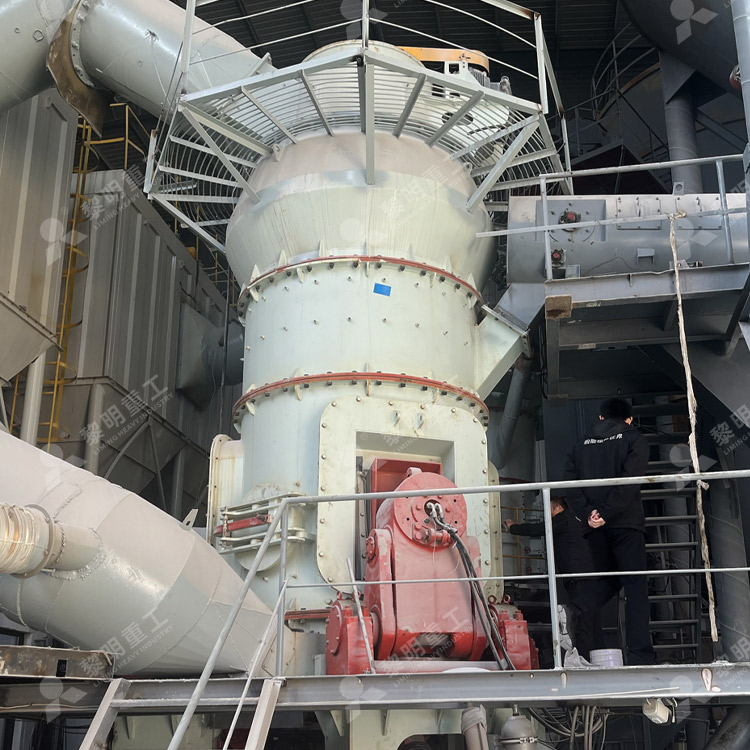The Concrete Grinder: Unleashing Performance and Sustainability from Within
When we gaze upon a modern skyscraper or drive across a vast bridge, we marvel at the strength and durability of concrete. Yet, few consider the microscopic world within that gives concrete its remarkable properties. At the heart of this hidden world lies a critical piece of industrial technology: the Concrete Grinding Mill. Far from being a simple crusher, this machine is a sophisticated engineering tool that unlocks enhanced performance, cost-effectiveness, and environmental sustainability for the most widely used construction material on earth.

1. Beyond Simple Powder: The "Why" Behind the Grinding
The primary mission of a concrete grinding mill is not to create aggregate but to produce Supplementary Cementitious Materials (SCMs). The most common SCMs are industrial by-products like granulated blast furnace slag (GGBS) and fly ash. In their raw state, these materials have limited use. However, when ground to an ultra-fine powder with a specific particle size distribution, their physical and chemical properties are transformed.
A grinding mill pulverizes these materials to a fineness often exceeding that of ordinary Portland cement. This ultra-fine powder fills the microscopic voids between cement particles, resulting in a denser, less porous concrete matrix. This leads to a cascade of benefits:
Enhanced Strength and Durability: Denser concrete means higher compressive and flexural strength over time. It also significantly reduces permeability, making the concrete highly resistant to water, chloride ions, and sulfates—the primary causes of rebar corrosion and structural decay.
Reduced Carbon Footprint: Every ton of SCM used directly replaces a ton of cement. Since cement production is notoriously energy-intensive and accounts for approximately 8% of global CO2 emissions, this substitution is a massive win for the environment. Grinding mills are, therefore, key enablers of green concrete.
Improved Workability and Cost Savings: SCMs can improve the plasticity and workability of fresh concrete, reducing the need for water and chemical admixtures. Furthermore, since SCMs are often less expensive than cement, they offer substantial economic advantages.
2. The "How": Core Technologies of Modern Grinding Mills
Not all grinding mills are created equal. The choice of technology depends on the required fineness, capacity, and energy efficiency. The two most prominent types in the industry are:
Vertical Roller Mills (VRM): The VRM has become the industry standard for large-scale production. In a VRM, feed material is ground between a rotating table and rollers under hydraulic pressure. The key to its efficiency is an integrated classifier that immediately separates fine particles from coarse ones, which are returned for further grinding. This targeted process minimizes over-grinding, making VRMs highly energy-efficient. They also have a compact design and lower operating noise levels.
Ball Mills: The traditional workhorse, a ball mill is a rotating cylinder filled with grinding media, typically steel balls. As the cylinder rotates, the balls cascade and impact the material, crushing it through friction and collision. While ball mills are robust and capable of producing a wide range of fineness, they are generally less energy-efficient than VRMs due to higher wear and tear and a less precise grinding mechanism. However, they remain a reliable and cost-effective solution for many applications.
Emerging technologies like High-Pressure Grinding Rolls (HPGR) are also being adopted for pre-grinding or as part of hybrid systems, pushing the boundaries of efficiency even further.
3. The Future: Intelligence and Integration
The evolution of the concrete grinding mill is moving towards greater digitalization and smart control. Modern mills are equipped with sophisticated sensors that continuously monitor critical parameters: bearing temperature, motor load, grinding pressure, and material flow. This data is fed into a Programmable Logic Controller (PLC) or a Distributed Control System (DCS), which uses advanced algorithms to optimize the mill's operation in real-time.
This "smart grinding" approach offers profound advantages:
Consistent Product Quality: Automated systems maintain a stable grinding bed and precisely control the classifier, ensuring the final product's fineness is always within specification.
Predictive Maintenance: By analyzing vibration and temperature trends, the system can predict component failures before they occur, scheduling maintenance during planned downtime and avoiding catastrophic, costly breakdowns.
Maximized Energy Efficiency: The control system dynamically adjusts power consumption based on the feed rate and material hardness, ensuring that no energy is wasted.
Conclusion: The Unsung Hero of Modern Construction
The concrete grinding mill is a quintessential example of a technology that creates value by transforming waste into worth. It sits at the intersection of mechanical engineering, material science, and environmental stewardship. By masterfully processing industrial by-products into high-performance SCMs, it empowers the construction industry to build structures that are not only stronger and more durable but also greener and more economical. As the global demand for sustainable infrastructure continues to grow, this powerful machine will undoubtedly remain an unsung hero, quietly grinding away to build a better, more resilient future—one particle at a time.





